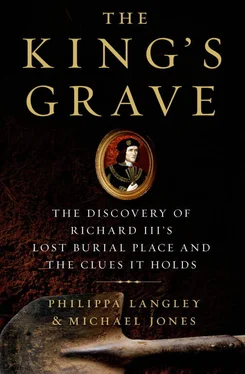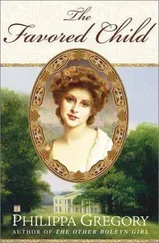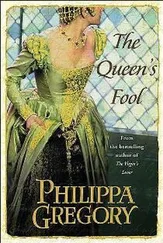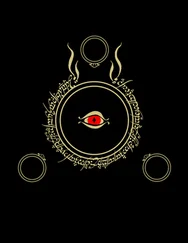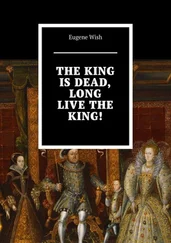Recent battle archaeology is now telling us much more about the site and course of Bosworth, in particular that Richard also invested in a substantial artillery train, and used it in the opening stages of the battle. These pieces would need to be carried up from England’s principal armoury, the Tower of London, and then drawn up on the battlefield to block Tudor’s advance. Again, preparing and transporting these guns was a considered plan, not the desperate response of a demoralized ruler. Richard wished to shock the army of his challenger. He hoped that his artillery would dominate the opening stages of the battle; he envisioned his cavalry charge would end it.
In William Shakespeare’s play, the hammer strike has been replaced by the stab in the back; the battle has become an awful judgement on Richard’s life and brief rule as king. And this is because – in Shakespeare’s eyes, as well as the Tudor histories that he drew upon – the king deserved such a fate. They believed that Richard had betrayed many in his ruthless ascent to the throne, and it seemed to them fitting that he had now been betrayed on the battlefield. Henry Tudor’s victory would be the judgement of God upon his crimes. And yet we do not see the king’s last few moments of life. He exits from the stage. Then his rival appears, surrounded by his captains, and tersely announces: ‘The bloody dog is dead.’
It is a death Shakespeare does not allow us to witness. The first reason why the search for Richard’s mortal remains is so fascinating is that we are still seeking an answer to this question. What were his last few moments really like – what happened to the king?
For Shakespeare, more than any other, has shaped our reactions to this deeply controversial monarch. From the moment Richard appears on the stage, and delivers his first soliloquy, we are both entranced and repulsed. We are caught in the stare of a bejewelled but venomous snake, and these eyes will not release us from their gaze.
Now is the winter of our discontent
Made glorious summer by this sun of York;
And all the clouds that lowered upon our house
In the deep bosom of the ocean buried.
We are reminded of the historical events that led to this fateful moment, already recounted in Shakespeare’s previous play, Henry VI, in its final part. The ruling dynasty Richard belongs to – the House of York – has survived the buffeting of civil war. During one period of unrest Richard’s brother, King Edward IV, is briefly forced off the throne by his opponents, the Lancastrians, and goes into exile. Then Edward returns triumphantly and routs his enemies. Twelve years of peace ensue. The ‘winter of discontent’, the loss of the throne and exile, is replaced by stable and prosperous rule. Richard’s play on words, ‘Made glorious summer by this sun of York’ is both historically and visually accurate, for Edward’s heraldic badge is the sun in splendour, and introduces us to his consummate skill with language. Already it carries incipient menace, for Richard carries his own ‘winter of discontent’ within his heart. It lies deeply buried, but will soon burst forth upon an unsuspecting court with terrifying power.
Our bruised arms hung up for monuments;
Our stern alarums changed to merry meetings,
Our dreadful marches to delightful measures.
It all seems superficially pleasing – discord has been replaced by harmony, dissension is now a thing of the past. But as soon as Richard sets up this new order he begins to subvert it, with deft and sardonic humour.
Grim-visaged war hath smoothed his wrinkled front;
And now, instead of mounting barbed steeds
To fright the souls of fearful adversaries,
He capers nimbly in a lady’s chamber
To the lascivious pleasing of a lute.
We learn that his warrior brother Edward, and the court around him, have gone soft and are lost in the sway of sensual pleasure. Richard mocks this, but underneath his mockery lies a far deeper disenchantment that will now be powerfully – and disturbingly – shown to us:
But I, that am not shaped for sportive tricks,
Nor made to court an amorous looking-glass;
I, that am rudely stamped…
We begin to see that beneath the finery of his courtly attire Richard is physically misshapen, and the contortion of his mind and body is more and more fully revealed:
…curtailed of this fair proportion,
Cheated of feature by dissembling Nature,
Deformed, unfinished, sent before my time
Into this breathing world, scarce half made up…
We are carried on this torrent of images into the world of an outsider, deeply alienated from others, an alienation that is mirrored in and perhaps ultimately stems from Richard’s physical appearance. Unable to be a lover, both of women and, in a far broader sense, of humanity, he roundly declares:
I am determined to prove a villain
And hate the idle pleasures of these days.
This is a compelling portrait, remorseless in its judgement of the man. Already it is clear that Richard is a cold-blooded killer. It is a chilling manifesto – but only if we believe the play, and the histories it was based upon.
In Shakespeare’s drama, the first intended victim of his villainy is soon disclosed. Richard has another brother, George, Duke of Clarence, and he confides that he will engineer his downfall, poisoning the mind of Edward, the king, against him. And if Edward – through weakness – relents, Richard himself will ensure that Clarence is dispatched. It will be the first of a series of chilling murders that will propel Richard – on a tide of pitiless ambition – to the throne of England itself.
Richard’s murder of Clarence is a pivotal moment within the play. And as this ghastly event unfolds, Richard’s physical appearance is more and more disturbingly emphasized. In one instance, as he moves across the stage, a heap of insults is poured upon him: he is ‘a bottled spider’, ‘a poisonous, bunch-backed toad’. His outer deformity is meant to mirror his corrupt inner nature. The Shakespearean Richard is hunchbacked, with a limping gait, and has a withered arm. So much invective gives us another reason why the search for Richard’s remains is so important: we need to know what he actually looked like.
For in Shakespeare’s drama, and the Tudor histories that underpinned it, the relentless focus is on Richard’s appearance, and the dark pathology they believed grew around it. One of its most striking antecedents is a description given by Sir Thomas More in his History of Richard III, a source composed some eighty years earlier than Shakespeare’s play, but one that would be profoundly influential on the playwright. In it we find Richard: ‘little of stature, ill featured of limbs, crook-backed, his left shoulder much higher than his right, hard-favoured in appearance… malicious, wrathful envious…’ We discover that Richard’s birth had been difficult, that his mother ‘could not be delivered of him uncut’ – a breech birth – ‘and he came into the world with feet forward, and also not untoothed…’
Having shared these details with us, More moves to what he believes are their dreadful consequences, concluding with the damning judgement: ‘He was close and secret, a deep dissembler, lowly of countenance, arrogant of heart, outwardly friendly where he inwardly hated, not omitting to kiss when he thought to kill, pitiless and cruel… Friend and foe was much the same; where his advantage grew, he spared no man death whose life withstood his purpose.’
For More, as for Shakespeare, the realm that Richard Inhabits is a perpetual winter kingdom. Everything is frozen, and expansive sentiments of generosity, trust, love and faith are replaced by cold calculation, ruthless ambition, cruelty and an utter ambivalence to worldly values. The figure of Richard carries near demonic power and if, initially, he almost charms the audience, this only foreshadows how he will beguile the sleeping court of his brother Edward IV.
Читать дальше
